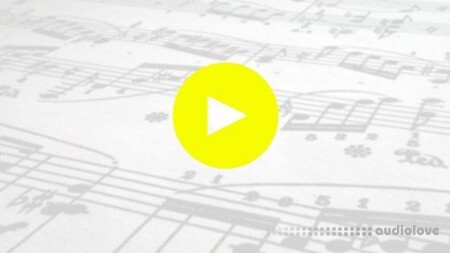Udemy Trinity Grade 3 Music Theory

This Grade 3 Music Theory video courses covers the Trinity syllabus in full.
Rhythm
Compound time (time signatures of 6/8, 9/8 and 12/8 )
Grouping semiquavers and semiquaver rests in simple and compound time (16th notes and rests)
Dotted quavers and dotted quaver rests in simple and compound time (dotted 8th notes)
Rules for grouping note and rest values within 6/8, 9/8 and 12/8 time signatures
Quaver triplets (8th note triplets)
Anacrusis
Ties using new note values
Pitch
Naming and using notes in treble or bass clefs (to three ledger lines above or below the stave)
Bb and D major keys (for all major keys for the grade: scales, key signatures, one-octave arpeggios, broken chords and tonic triads (root or first inversion)
G and B minor keys (for all minor keys for the grade: scales - natural (Aeolian mode) and harmonic and melodic, key signatures, one-octave arpeggios, broken chords and tonic triads (root or first inversion)
Second inversions of major and minor tonic triads of keys covered so far
Identifying the key of a piece in Bb or D major and G or B minor
5th degree of the major/minor scale being known as the dominant or soh (major keys only)
Dominant triads for all keys covered so far
Major/minor dominant triad labelled:
— as a chord symbol above the music (e.g. G in the key of C major or Em (E where the 7th
degree is raised) in the key of A minor)
— as a Roman numeral below the music (e.g. V in the key of C major or v (V where the 7th degree
is raised) in the key of A minor)
7th degree of the major/minor scale being known as the leading note
Understanding the term ‘chord progression’
Recognising a perfect cadence in the home key (major or minor)
Intervals (major/minor 6th, major/minor 7th above any tonic for the grade)
Writing tonic chords in root position in any key for the grade as well-balanced 4-part chords for SATB
Real and tonal sequences
Similar and contrary motion
Transposing a tune up or down an octave from treble clef to bass clef and vice versa
Ranges of violin, flute, cello, bassoon, as defined in the workbook
Knowing that violin and cello are string instruments, flute and bassoon are woodwind instruments
Musical terms and symbols
What you'll learn
Pass Trinity Grade 3 Music Theory with Distinction!
Build on your knowledge of how music works, and how to pass the Trinity exam
Further your skills in composition and harmony
Practise your skills with the included PDF, exercises and tests!
Home page
DOWNLOAD
